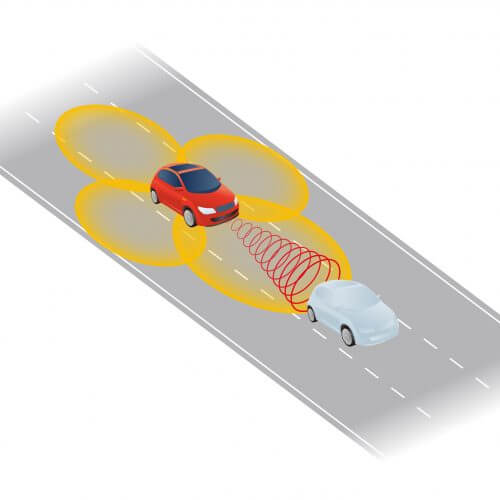The number of accidents involving autonomous vehicles signals that it is impossible to continue to rely on humans to teach the vehicle to drive, that artificial intelligence must learn by itself

By: Yigal Reichelgauz, CEO and co-founder of Kortika.
The autonomous vehicle industry has created an expectation for safer roads and a significant reduction in the number of accidents. But recently the number of reports on accidents in the industry has been increasing even though the number of autonomous vehicles on the road is still very small. This fact does not surprise those involved in the field and disturbs them greatly. The race between the giant companies to conquer the trillion-dollar market of the autonomous vehicle pushes them to come out quickly with statements and the launch of vehicle models that advance the level of technological capability they possess. The number of autonomous vehicles on the road is expected to increase dramatically in the coming years, and if their capabilities do not improve, the number of accidents will also increase. In order to avoid this, the technological challenges must be faced on the way to safe autonomous driving with the help of a perceptual change and not just a gradual improvement in the computing power of the vehicle and the amount of data it is able to process.
We human drivers have an extraordinary ability to read and understand complex situations on the road in real time. Predict the scenarios that may develop in the next few seconds and include the human factor in the system of considerations. In contrast, today's autonomous vehicles are based on guided learning that is limited to recognizing objects that have been defined for them in advance by people.
To close the gap with a human driver, there is a need for artificial intelligence capabilities that enable real-time learning, adaptation to road conditions, predictive capabilities and analysis of interactions between the factors on the road. The technological basis that enables these capabilities is called unguided learning - a technology capable of discovering and creating representations of objects, situations and behaviors from a flow of random information continuously coming from the vehicle's cameras. Just as humans learn from the environment they are in, this technology also gives the speeding autonomous vehicle the autonomy to learn and understand the world around it in order to make correct decisions even in complex cases.
Therefore, the autonomous vehicle industry cannot continue to rely on humans entering data into the system, in an attempt to map all the possible end cases that the vehicles traveling around the world will encounter on the roads. Therefore, the industry must abandon the use of "artificial intelligence" and switch to the use of "autonomous artificial intelligence", which is the holy grail of the autonomous vehicle industry and a necessary condition for its existence. We have entered a period of challenging decades in which the world will move from manual driving to full autonomy. during which computers will have to deal with an increasing number of complex cases on the road in which the human factor is also involved. For example, if a ball bounced onto the road, the system must know that it's not just a ball, it's likely that a person will follow it and prepare to brake. The requirements of the automotive industry are already pushing the leading artificial intelligence developers to develop capabilities that were only recently seen as science fiction, such as intuition and autonomy. These capabilities will likely lead to technological revolutions, far beyond the automotive industry, and will disrupt other markets such as the defense market, the field of autonomous production and the world of robotics.
We at Cortica focus on the development of "autonomous artificial intelligence" technology, which simulates the activity of the human brain which has evolved over millions of years to develop advanced cognitive abilities. Our path began as part of research at the Technion on living brain tissue, trying to answer basic questions such as what is the computational building block of the cortex tissue in the brain, how a large number of these units cooperate together and learn independently. At Cortica we have developed software that reproduces these principles and imitates the human learning process. Integrating this technology into autonomous vehicles allows them to learn to drive on their own, while driving and even share the insights they have produced with each other to improve the general database for safe driving.

2 תגובות
Unlike humans, one car learned, all cars know.
I did not understand what the new article was about.
At no point in the past did I expect that we would learn to drive the royal intelligence, as if she were a driving student.
If that were the case - it's a shame for the efforts because it is impossible to teach an infinite number of situations. Just like you can't teach a person to be smart.
The concept presented in the article is a correct concept, but I never thought that some thought otherwise.